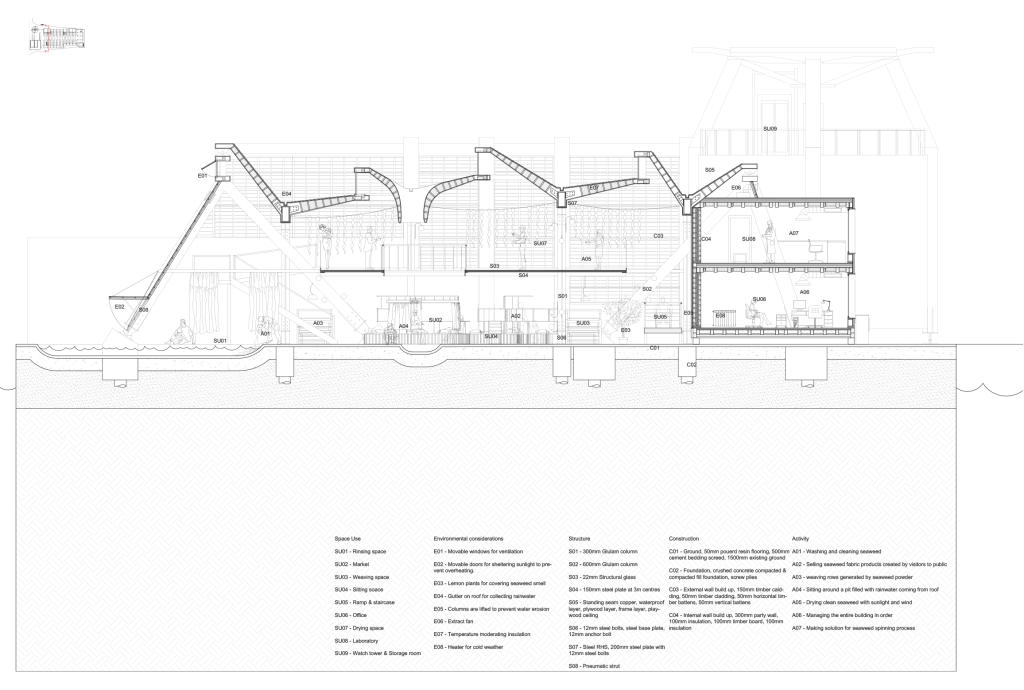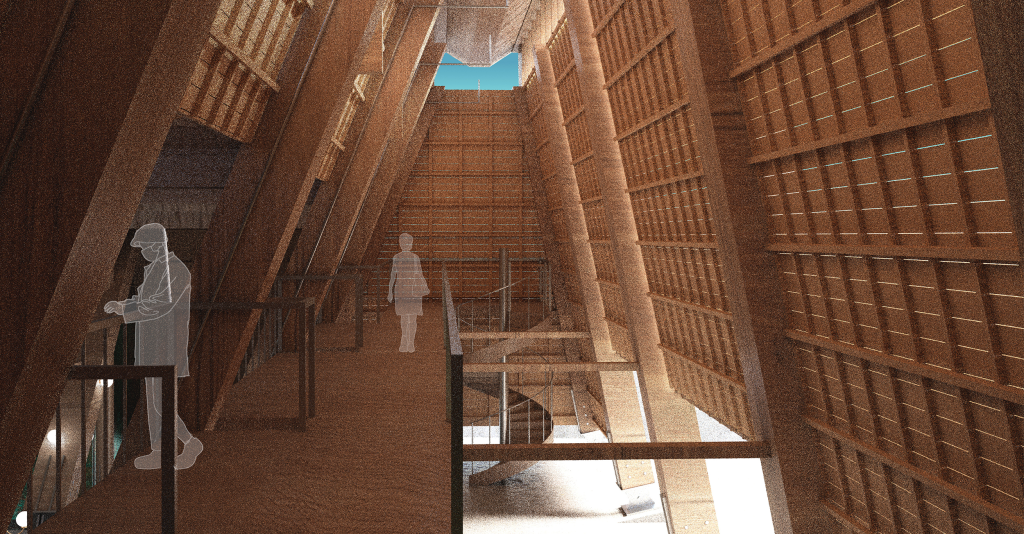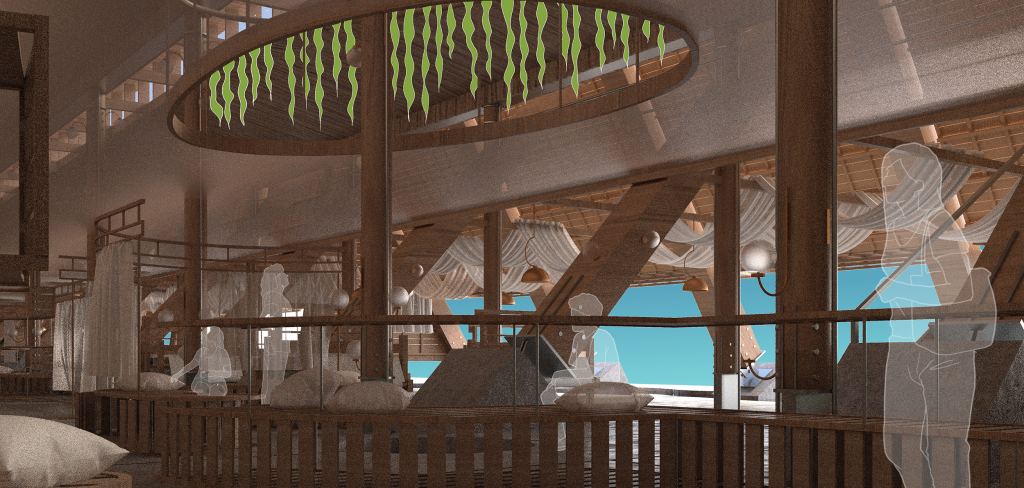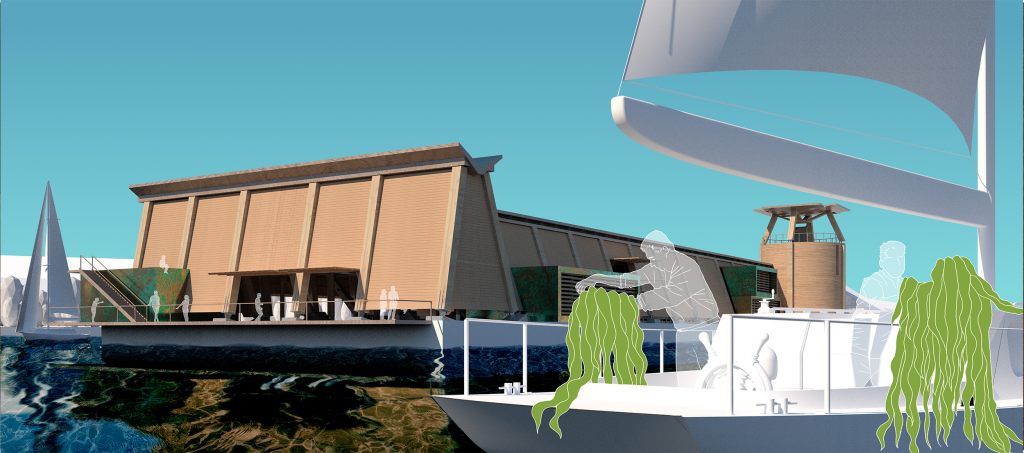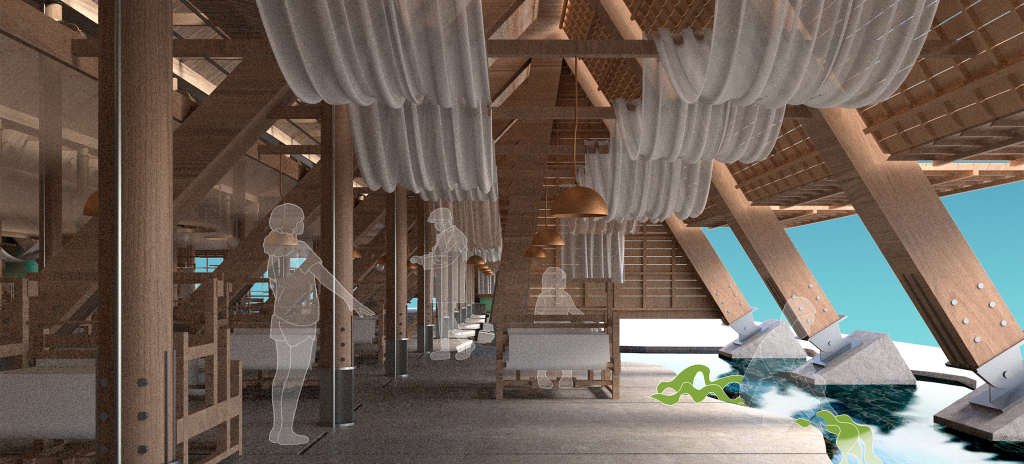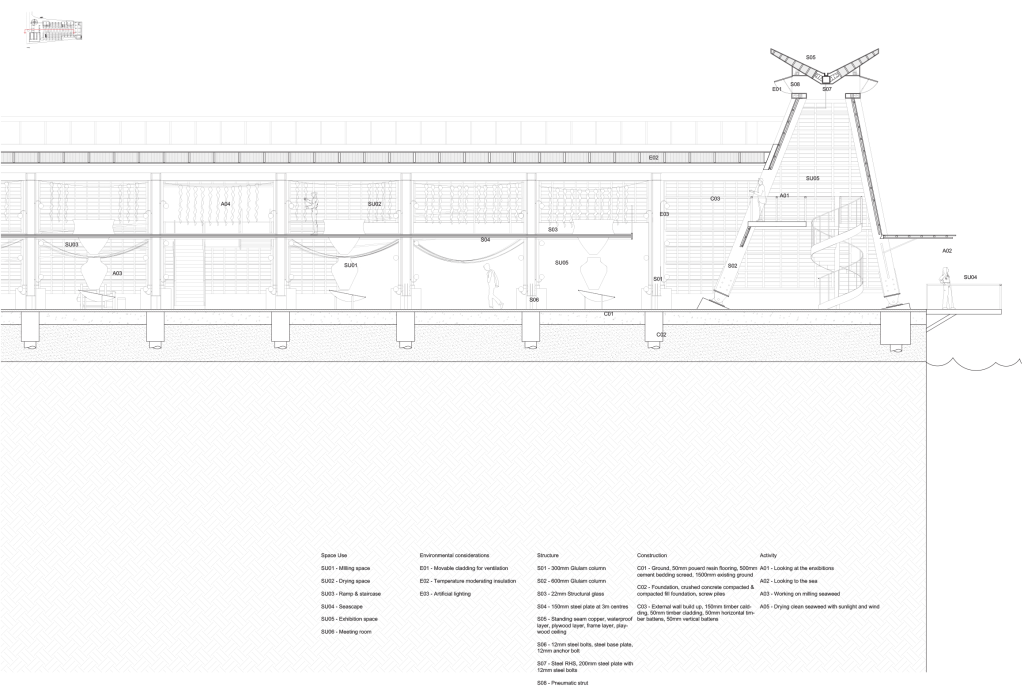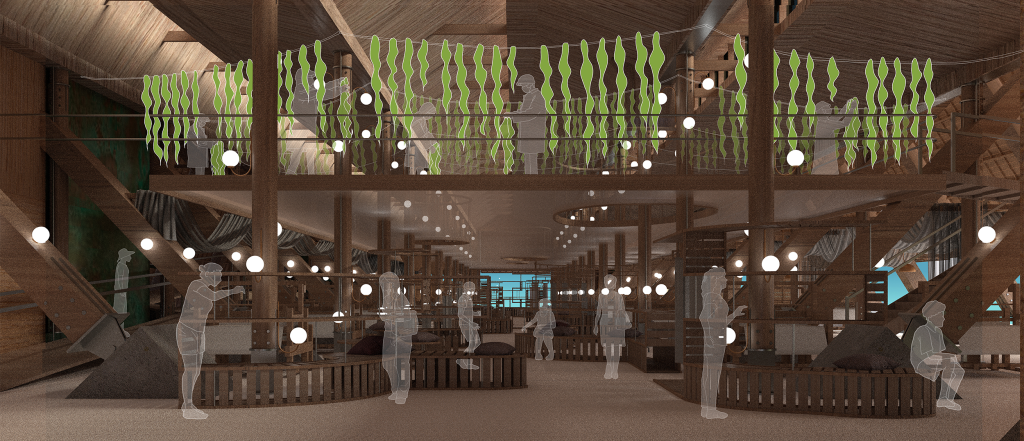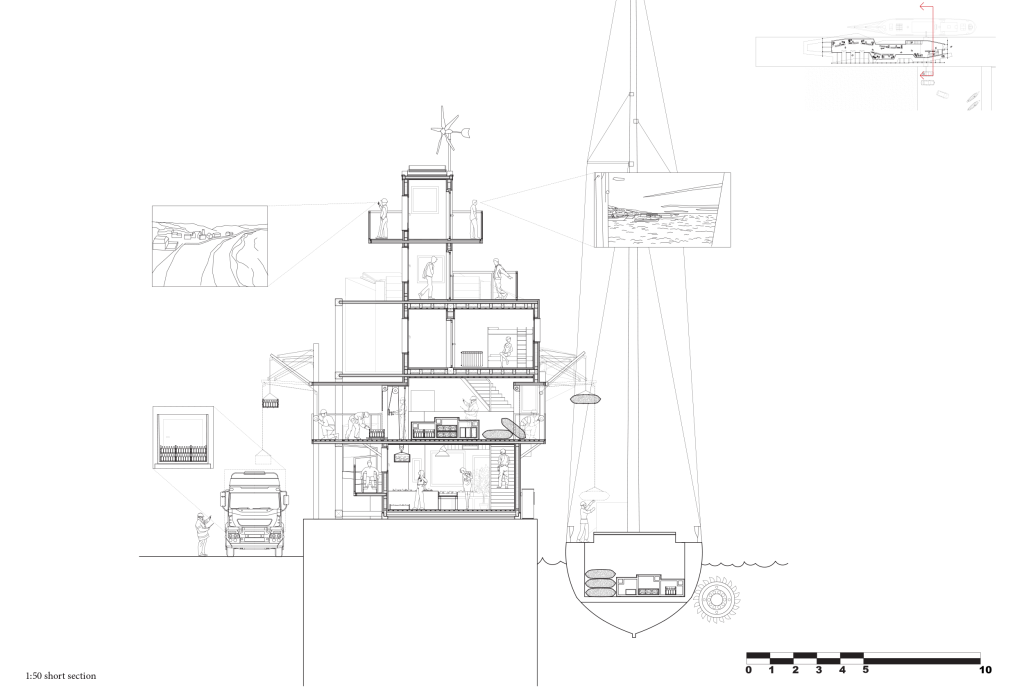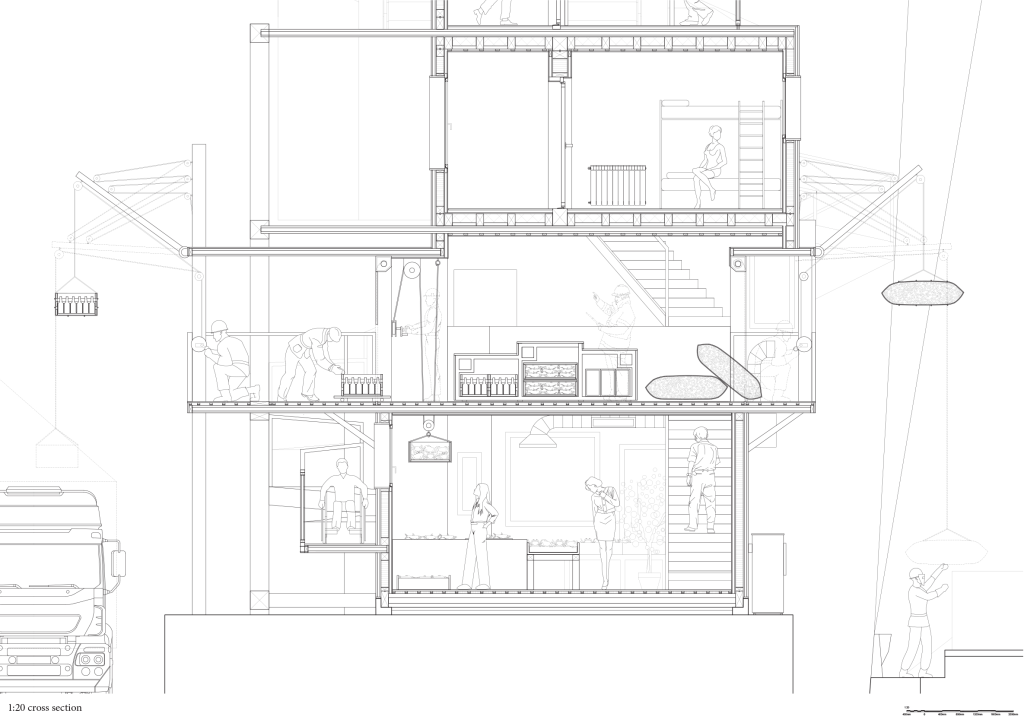Shiyu Zhao
Seaweed Fabric
Seaweed is a natural product with incredible properties that is starting to be utilised increasingly in today’s climate; with local offshore farms beginning to sprout up in Cornwall, the Par Horticultural Seaweed Centre is both a processing plant for horticultural seaweed products and a community space for locals and tourists alike. While distributing these amazing products across the country it was also important to ensure that the project also gave back to the community, with spaces for events, a beautiful garden to enjoy and tourist attractions to experience; bringing people together in Cornwall and providing a new route for income in one of the most impoverished counties in England. Each “wing” of the dock represents the two areas of both ‘production’ and ‘community,’ combining in their use and processing of seaweed.
Seaweed textiles are the product of the seaweed, and the concept of this design is to integrate industrial space with public space, allowing people to participate in the production of seaweed, thus gaining a better understanding of the benefits of seaweed and a greater appreciation of the plant. The paths of the workers and the paths of the visitors intersect, and people will meet as they travel, thus achieving integration. People can buy seaweed textiles at the market located on the central path, while the industrial areas on either side of the market provide views for visitors. The atmosphere of the interior simulates the sunlight in the sea, where all the light is reflected, soft and random. In this design, the water is used as a medium to clean the seaweed and also to reflect the sunlight from the outdoor sun into the interior, creating a connection between the interior and the exterior. The intake of sunlight is controlled by movable shades in several parts of the building, which give the building a more dynamic change. The main material of the building is timber, cladded with green copper. The design of the roof is inspired by the shape of a bird’s wing, which allows rainwater to be collected while the gaps in the ‘wings’ allow sunlight to enter the interior.
Email: zhaoshiyu_alice@outlook.com
Instagram: alicezsy409
Linkedln: linkedin.com/in/shiyu-zhao-0520381b6
The Fishing market
Introduced in the heart of Reading Town, Hogmanay, the Scottish celebration of New Years, brings a large infusion of culture and festivity to the local area. Cock-a-Leekie soup, being an integral cuisine of the Scottish, accompanies the festivities. The influx of Hogmanay culture, introduced by the arrival of the Soup Facility, will indulge Reading in a host of traditions that seek to bring people together to celebrate the New Year and the fresh start that follows midnight. On New Year’s Eve in Reading, the public are invited to join in the activities, including; farming the ingredients for the soup, trying the soup, setting Juniper branches alight at midnight, Ceilidh dancing, drinking homemade Gin, and the chance to watch as the chefs produce the soup from raw ingredients on site.
Cock a Leekie , Scotland, Timber, Homemade, Feathers, New years
Once a fishing village, Aberaeron developed into an important trading port, which contributed to the development of local industry. However, shortly after the opening of the railway, trains became a more economical way of transporting goods, which meant that it lost its importance as a trading point. This project reintroduces the port as an important part of the town, so that the port can still serve its value for the town. The design features a public facing herring market on the ground floor and a first floor for workers to move the cargoes. The external ramp that provides access to all floors and areas of the building is friendly to everyone. The structure to which the facade is attached provides shade while deepening the depth of the skin. The accessible roof is also an important area that serves as a grandstand.


